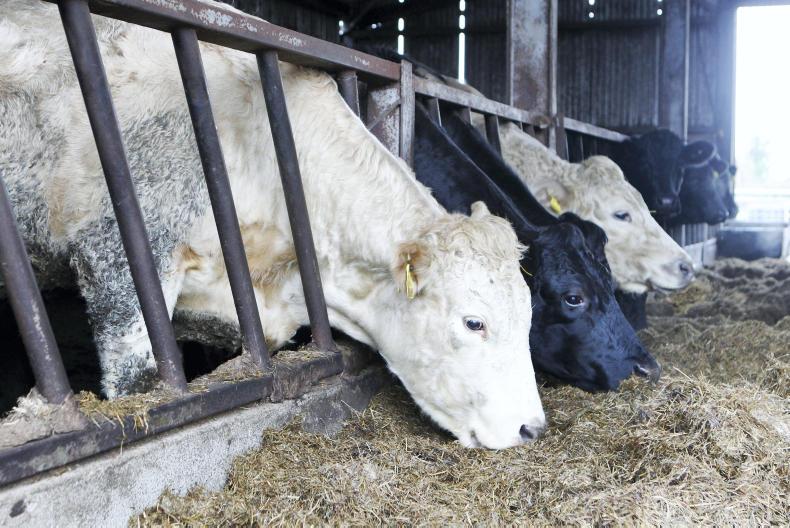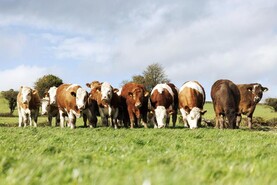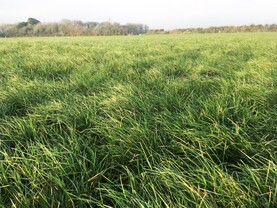Unfortunately more cattle have been housed this week across the country as ground conditions deteriorate further.
On suckler farms, many farmers are weaning cows and drying them off for longer-term housing in the hope that if weather and ground conditions improve, weanlings will be able to return to grazing any grass not grazed yet.
It’s very important when cattle are housed that ventilation is correct and there is plenty of air movement in the shed allowing stale air to be removed.
Disease
Warm, moist and stale air is a breeding ground for disease.
Signs that the ventilation is not up to scratch include a constant smell of ammonia, temperature too warm, cobwebs on the timbers or timbers and sheets becoming black with mould.
There are a few points to note. A ridge opening should run along the full length of a roof apex.
Wider sheds require wider openings, as follows:
Up to 15m (50ft) span – minimum 450mm (18in) wide.Up to 24m (79ft) – 600mm (24in) wide.Over 24m – 750mm (30in) wide.Size of inlets are equally important to allow fresh air to enter the shed, create a stack effect and push the stale air out.
Be careful where sheds have been extended that there is sufficient inlet area for the span of the new shed.
Size of the inlet should be the same as the outlet as detailed above. Make sure there is nothing impeding inlet airflow outside the shed like trees, or hay or straw stacked up against the inlet area.
A simple smoke bomb test can be undertaken demonstrating where air is moving and if it’s getting out fast enough.
It’s important to carry out this test when the cattle are indoors to get a true reflection of the ventilation in the shed.
Read more
Beef management notes: getting weaning right
Condition scoring suckler cows for indoor feeding
Unfortunately more cattle have been housed this week across the country as ground conditions deteriorate further.
On suckler farms, many farmers are weaning cows and drying them off for longer-term housing in the hope that if weather and ground conditions improve, weanlings will be able to return to grazing any grass not grazed yet.
It’s very important when cattle are housed that ventilation is correct and there is plenty of air movement in the shed allowing stale air to be removed.
Disease
Warm, moist and stale air is a breeding ground for disease.
Signs that the ventilation is not up to scratch include a constant smell of ammonia, temperature too warm, cobwebs on the timbers or timbers and sheets becoming black with mould.
There are a few points to note. A ridge opening should run along the full length of a roof apex.
Wider sheds require wider openings, as follows:
Up to 15m (50ft) span – minimum 450mm (18in) wide.Up to 24m (79ft) – 600mm (24in) wide.Over 24m – 750mm (30in) wide.Size of inlets are equally important to allow fresh air to enter the shed, create a stack effect and push the stale air out.
Be careful where sheds have been extended that there is sufficient inlet area for the span of the new shed.
Size of the inlet should be the same as the outlet as detailed above. Make sure there is nothing impeding inlet airflow outside the shed like trees, or hay or straw stacked up against the inlet area.
A simple smoke bomb test can be undertaken demonstrating where air is moving and if it’s getting out fast enough.
It’s important to carry out this test when the cattle are indoors to get a true reflection of the ventilation in the shed.
Read more
Beef management notes: getting weaning right
Condition scoring suckler cows for indoor feeding






 This is a subscriber-only article
This is a subscriber-only article










SHARING OPTIONS: